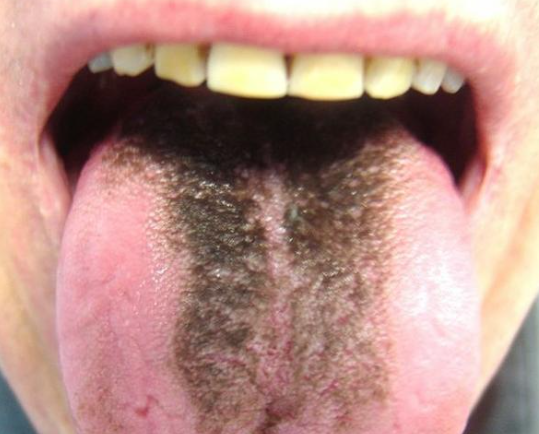
You’re brushing your teeth, and you stick out your tongue out of habit. But this time, you see something that makes you pause. There’s a smooth, red patch, almost like a bald spot, surrounded by what looks like a slightly raised, white border. It doesn’t hurt, but it looks… strange. Unfamiliar. Your first thought, or perhaps the result of a quick online search, might be “geographic tongue.”
And while that’s a common and usually harmless condition, it’s not the only player on the field. Sometimes, these spots on your tongue aren’t the benign, wandering map of geographic tongue. They are your body’s internal dashboard, lighting up to signal a nutrient deficiency.
Let’s be clear: this isn’t meant to cause alarm, but to empower you with knowledge. Your tongue is a remarkably accurate reflection of your overall health, and changes in its appearance are often one of the first places a nutritional shortfall becomes visible.
The Usual Suspect: Geographic Tongue
First, let’s identify what we’re not talking about. Geographic tongue (Benign Migratory Glossitis) is a harmless, inflammatory condition where the tiny, hair-like filiform papillae on your tongue’s surface shed unevenly. This creates smooth, red, map-like patches that seem to “migrate” over days or weeks. It’s often painless, though it can sometimes be sensitive to spicy foods.
When It’s a Nutritional Signal: Decoding the Spots
If your tongue spots are accompanied by other symptoms like pain, a burning sensation, or general inflammation, your body might be trying to replenish its stocks. Here are the most common nutritional deficiencies that can manifest on your tongue:
- The Fiery-Red, “Beefy,” and Painful Tongue
- The Deficiency: Vitamin B12 (and sometimes other B vitamins like Folate).
- What You Might See: This is known as Glossitis. Instead of distinct map-like patches, the entire tongue may become uniformly red, smooth, swollen, and painful. It can feel sore and burn, especially when eating. The papillae atrophy (shrink), giving the tongue a glossy, “beefy” appearance.
- The Body’s Message: B vitamins are crucial for cell reproduction, including the cells that make up your tongue’s papillae. Without them, these cells can’t regenerate properly, leading to this inflamed, smooth state. This is especially common in older adults due to changes in absorption.
- The Pale and Painfully Smooth Tongue
- The Deficiency: Iron.
- What You Might See: Iron deficiency anemia can also cause a condition very similar to B12-induced glossitis. The tongue may lose its healthy pink color, becoming pale and smooth due to the loss of papillae. It’s often accompanied by other classic signs of anemia, such as fatigue, weakness, and pale skin.
- The Body’s Message: Iron is essential for producing healthy red blood cells and for oxygenating tissues. When it’s in short supply, rapidly dividing cells—like those on your tongue—are among the first to be affected.
- A Combination of Sores and Inflammation
- The Deficiency: A combination, often involving B Vitamins, Iron, or Vitamin C.
- What You Might See: You might experience not just a smooth tongue, but also recurrent canker sores (aphthous ulcers) at the same time. This combination is a strong indicator that your body’s nutritional reserves are depleted, weakening the mucous membranes in your mouth and making them susceptible to breakdown and ulceration.
What to Do If You Suspect a Deficiency
Seeing these signs is a reason for curiosity, not panic. It’s a nudge to look at the bigger picture of your health.
- Don’t Self-Diagnose and Megadose: The solution is not to run out and buy a handful of supplements. Too much of certain vitamins can be harmful.
- Schedule a Visit with Your Doctor: This is the most important step. Describe exactly what you’re seeing and feeling on your tongue. They can order a simple blood test to check your levels of B12, Folate, Iron, and other markers.
- Embrace a Nutrient-Rich Diet: While you wait for your appointment, you can’t go wrong by focusing on a whole-foods diet. Think leafy greens, lean proteins, eggs, legumes, and citrus fruits. It’s like sending in a skilled repair crew with all the right tools.
Those spots on your tongue are a conversation starter from your body. While geographic tongue is often just a quirky, harmless trait, a painful, smooth, or persistently inflamed tongue is your body’s way of waving a flag. It’s pointing you toward a potential imbalance, asking you to look deeper and ensure that the foundational building blocks of your health are well-stocked and ready for action.